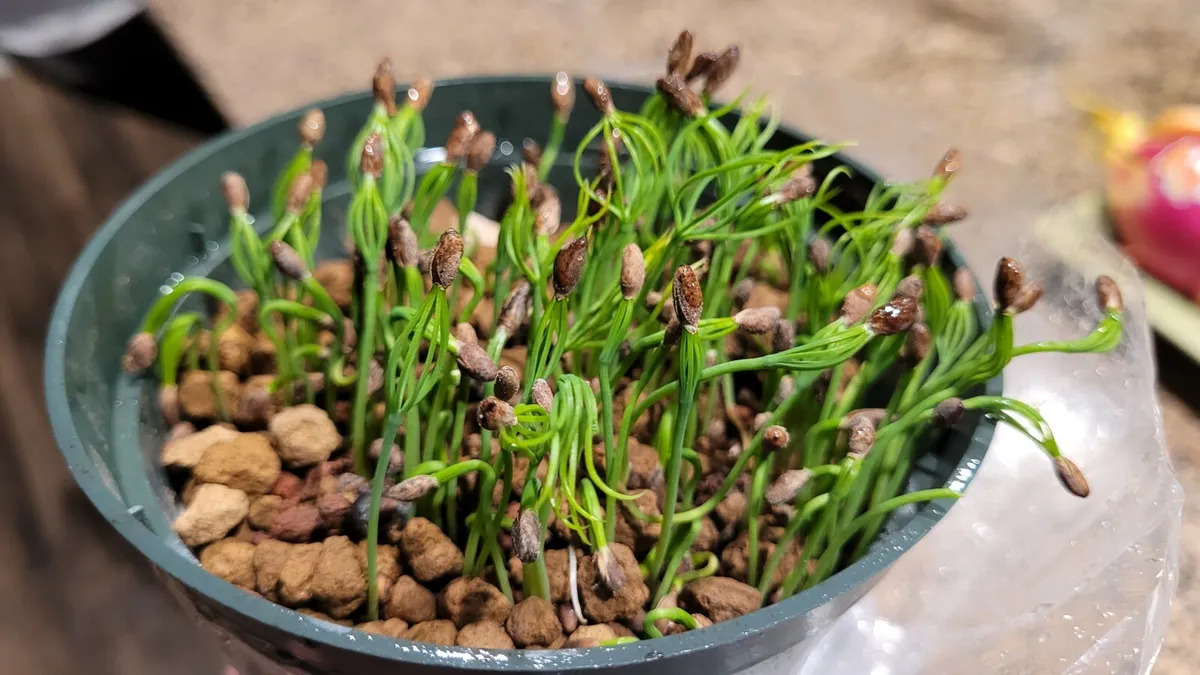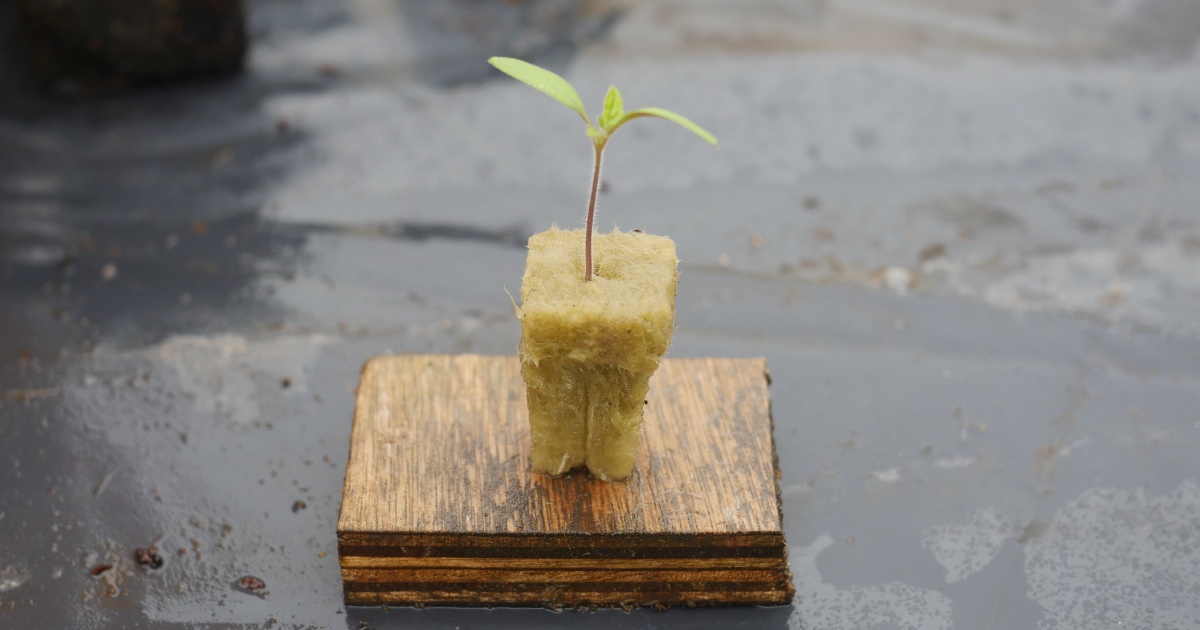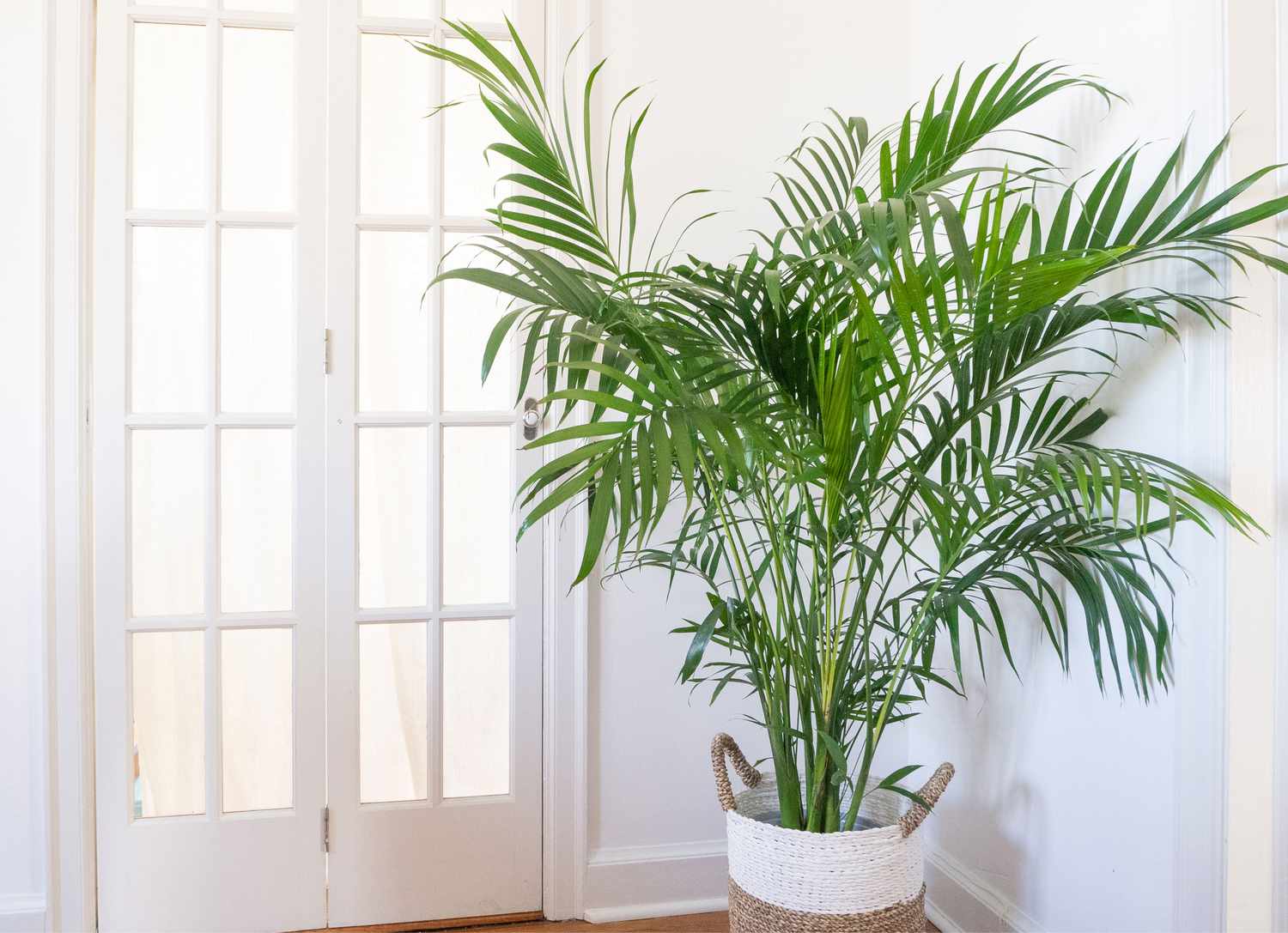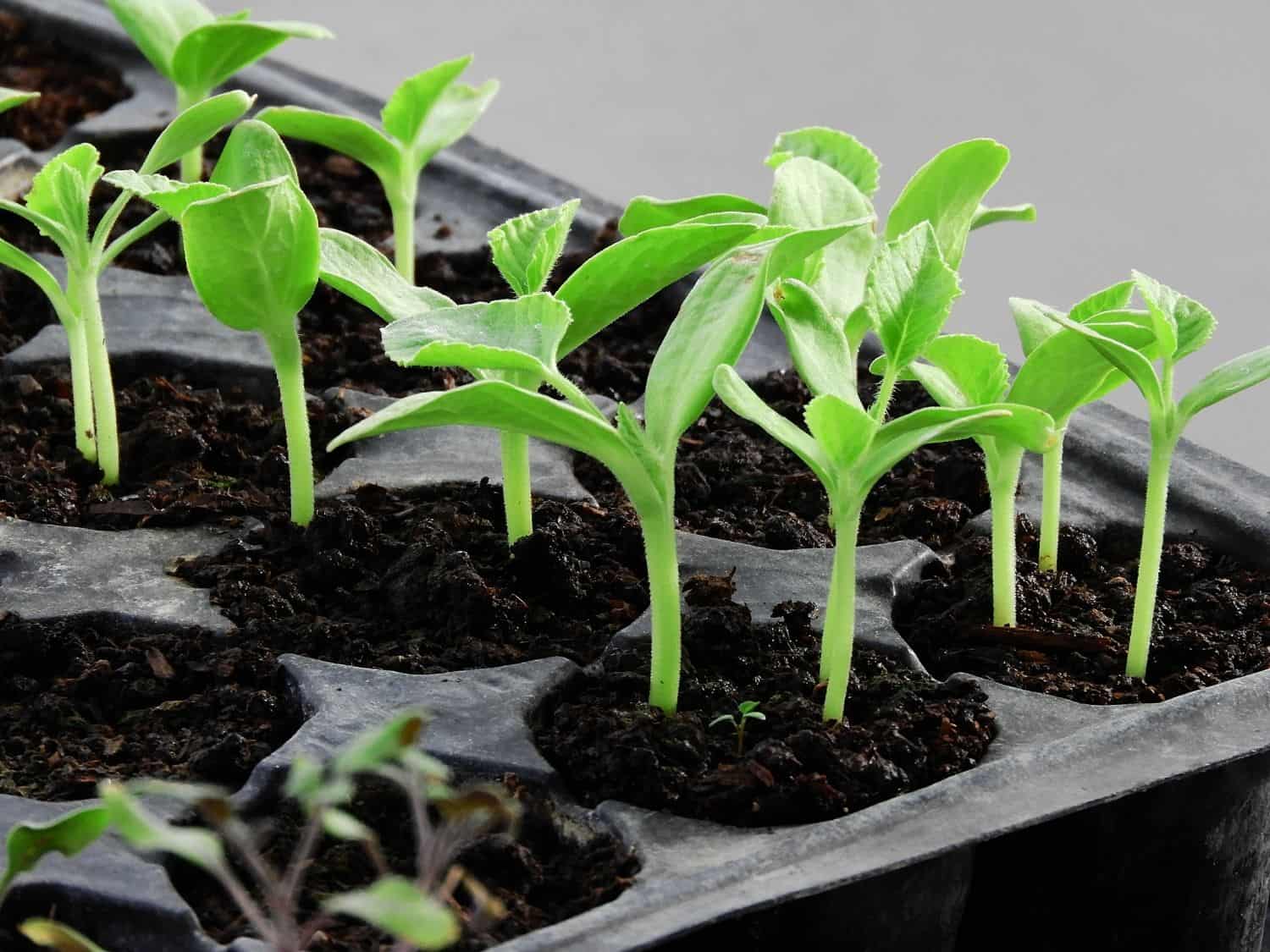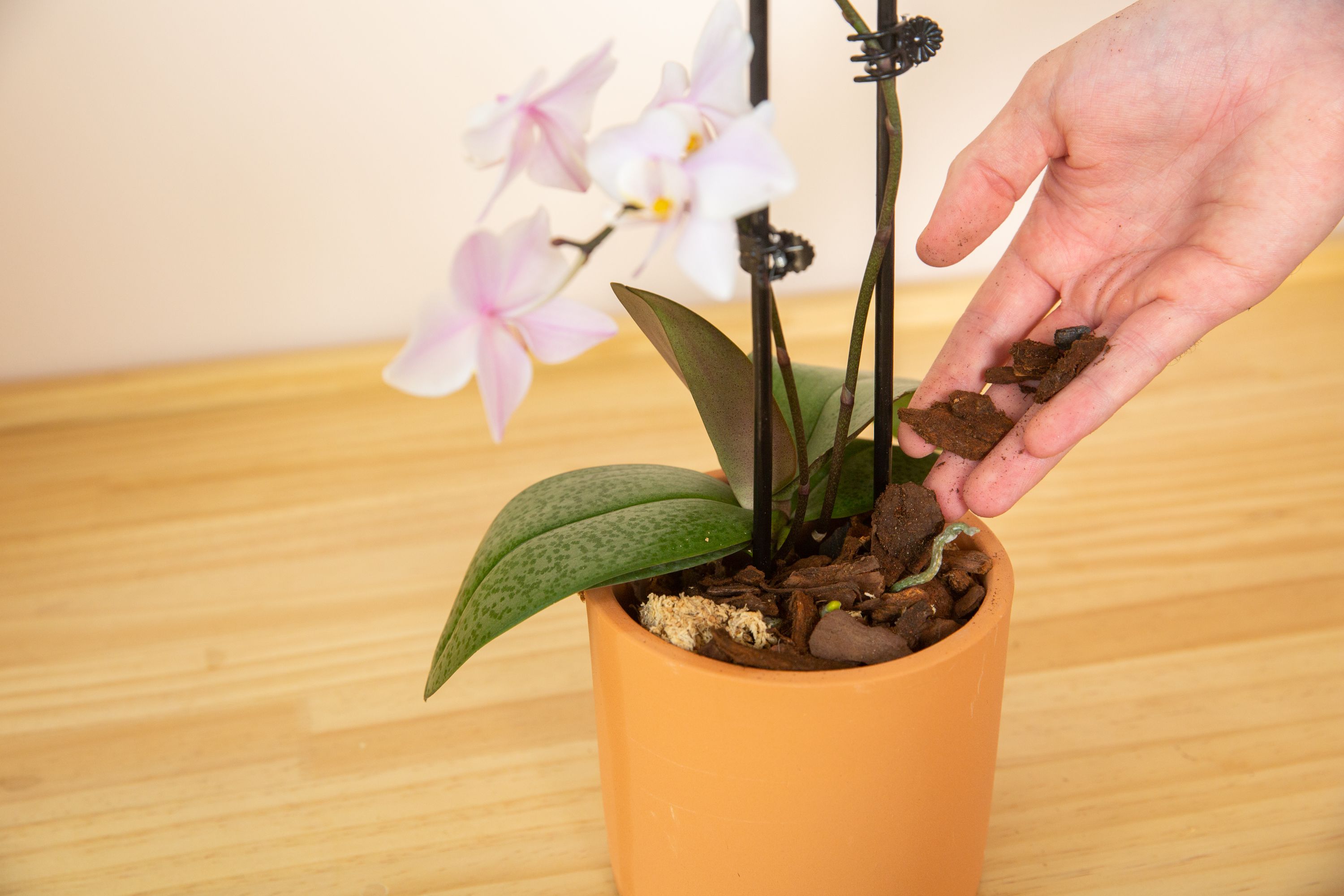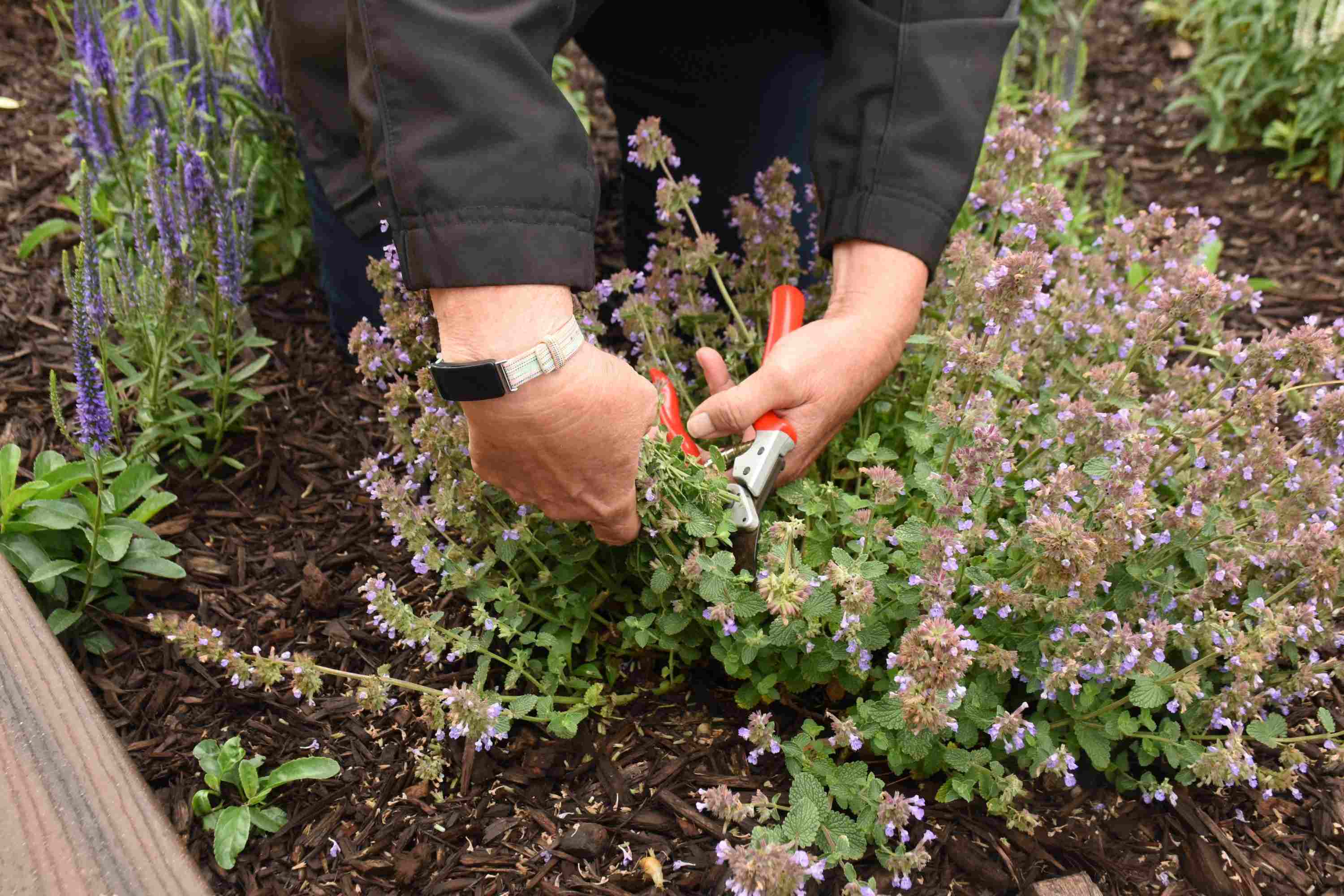Home>Types of Gardening>Ornamental Gardening>How To Care For Pearl Succulents
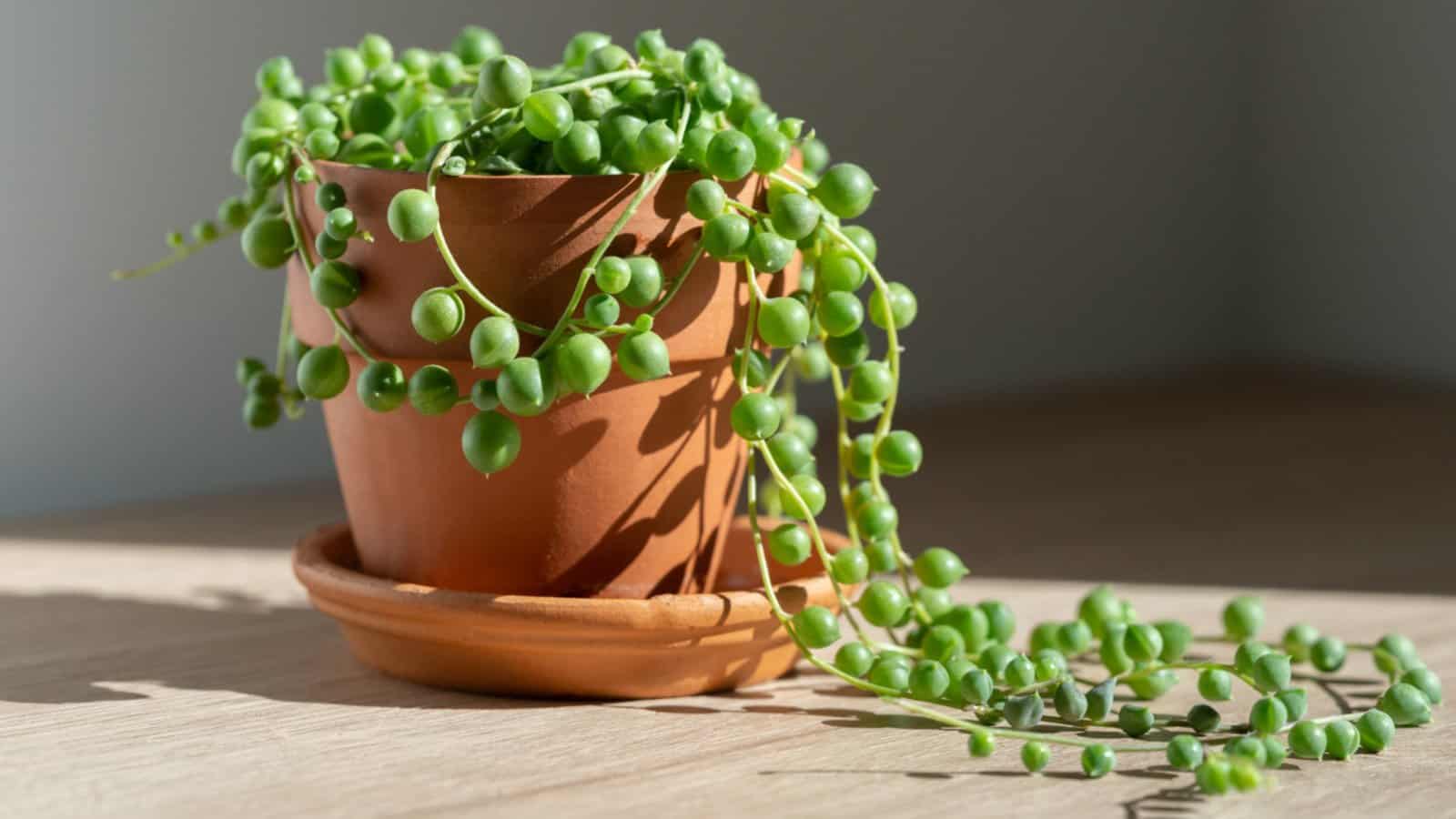

Ornamental Gardening
How To Care For Pearl Succulents
Modified: February 9, 2024
Learn how to care for pearl succulents in your ornamental gardening journey. Find helpful tips and tricks for keeping these unique plants thriving and beautiful.
(Many of the links in this article redirect to a specific reviewed product. Your purchase of these products through affiliate links helps to generate commission for Chicagolandgardening.com, at no extra cost. Learn more)
Table of Contents
Introduction
Welcome to the enchanting world of pearl succulents, where beauty meets resilience. These stunning plants, also known as Senecio rowleyanus or String of Pearls, are beloved by gardeners and plant enthusiasts for their unique appearance and low maintenance needs. With their delicate cascading tendrils adorned with spherical, bead-like leaves, pearl succulents add a touch of elegance and whimsy to any indoor or outdoor space.
In this comprehensive guide, we will delve into the art of caring for pearl succulents, equipping you with the knowledge and skills needed to ensure their health and longevity. Whether you’re a beginner gardener or a seasoned succulent lover, you’ll find valuable tips and insights to enhance your gardening journey.
Within these pages, we will explore various aspects of pearl succulent care, ranging from their light requirements and watering guidelines to potting and soil recommendations. We will also cover essential techniques such as fertilizing, pruning, and propagation. Additionally, we will discuss common pests and diseases that may affect your pearl succulents, along with troubleshooting tips to help you address any issues that may arise.
So, whether you’re considering adding pearl succulents to your collection or you’re already a proud owner looking to expand your knowledge, let’s embark on this delightful adventure and discover how to care for these exquisite plants.
Understanding Pearl Succulents
Pearl succulents, scientifically known as Senecio rowleyanus, are native to South Africa. These fascinating plants are classified under the family Asteraceae and are characterized by their trailing stems adorned with small, spherical leaves resembling pearls. This unique appearance has earned them the popular nickname “String of Pearls.”
The pearl succulent is a succulent perennial, meaning it stores water in its leaves, making it highly adapted to arid conditions. This natural adaptation allows them to survive in dry environments with minimal water supply.
It is important to note that although pearl succulents are easy to care for, they are not frost-resistant. Therefore, they thrive in USDA hardiness zones 10-12, which are characterized by mild winters and warm climates. For those in colder regions, pearl succulents are best grown as houseplants or in containers that can be brought indoors during colder months.
These plants can be grown both indoors and outdoors, depending on the climatic conditions and personal preference. When grown indoors, they create a stunning addition to any window sill, shelf, or hanging planter. Outdoors, they excel in containers, hanging baskets, or as ground cover in rock gardens or succulent beds.
While pearl succulents have gained popularity for their ornamental value, it’s important to note that all parts of the plant are toxic if ingested. Therefore, it’s essential to keep them away from curious pets or small children who may be tempted to taste them.
Now that we have a basic understanding of pearl succulents, let’s explore the specific care requirements to keep them thriving and looking their best.
Light Requirements
Pearl succulents have specific light requirements to thrive and maintain their vibrant appearance. In their native habitat, they grow under bright, indirect sunlight. When it comes to indoor cultivation, replicating these lighting conditions is crucial for their overall health.
Place your pearl succulent in a location that receives bright, indirect light for at least four to six hours a day. Avoid exposing them to direct sunlight, especially during the hottest hours of the day, as it can lead to scorching or sunburn on their delicate leaves.
If you notice your plant’s pearls starting to stretch or elongate, it is an indication that they are not receiving enough light. In this case, gradually acclimate your succulent to brighter conditions, taking care not to expose it to direct sunlight too quickly to prevent leaf burn.
On the other hand, if your pearl succulent is placed in a location with insufficient light, the leaves may turn pale or yellowish. If this occurs, consider moving your plant to a brighter area or supplementing its light requirements with artificial grow lights.
When growing pearl succulents indoors, windows facing east or west generally provide the ideal light intensity. However, if you do not have access to such windows, you can also use fluorescent or LED grow lights placed at a suitable distance to provide adequate light for your plants.
Remember to periodically rotate your pearl succulent to ensure even light exposure to all sides, as they tend to grow towards the light source. This rotation will help maintain a balanced and symmetrical appearance.
By providing the right amount and quality of light, you can ensure that your pearl succulents grow healthy and maintain their captivating beauty.
Watering Guidelines
Proper watering is crucial for the health of your pearl succulents. These plants have adapted to survive in arid conditions, and overwatering can lead to root rot and other issues. It’s important to find the perfect balance to keep them hydrated without causing waterlogged soil.
One of the key principles in watering pearl succulents is allowing the soil to dry out between waterings. Before watering, check the moisture level in the soil by inserting your finger about an inch deep. If it feels dry, it’s time to water your plant.
When watering, aim for a thorough soak, ensuring that water reaches the entire root system. Water from the top, allowing it to flow through the soil and out the drainage holes of the container. Be cautious not to leave water sitting in the saucer or tray, as this can lead to root rot.
It’s important to note that pearl succulents have a higher tolerance for underwatering than overwatering. Therefore, it’s generally best to err on the side of underwatering, rather than keeping the soil constantly damp. Too much moisture can cause the pearls to swell and become mushy.
During the active growing season, which is typically spring through summer, you can water your pearl succulents once every two to three weeks. However, frequency may vary depending on factors such as temperature, humidity, and the type of potting mix used.
During the dormant season in fall and winter, reduce watering to once a month or even less, as the plant’s growth slows down. Pay attention to the environment and adjust your watering schedule accordingly.
In addition to regular watering, pearl succulents benefit from occasional misting to increase humidity levels around their leaves. However, avoid misting directly onto the pearls to prevent water droplets from accumulating and causing rot.
By following these watering guidelines and maintaining a diligent routine, you can ensure that your pearl succulents stay hydrated while avoiding the risks associated with overwatering.
Temperature and Humidity Levels
Pearl succulents thrive in relatively warm temperatures and low humidity, similar to their native habitat in South Africa. Understanding the ideal temperature and humidity conditions will help you create an environment where your plants can flourish.
The optimal temperature range for pearl succulents is between 65°F (18°C) and 80°F (27°C). They can tolerate slightly higher or lower temperatures for short periods, but prolonged exposure to extreme heat or cold can be detrimental to their health. Protect your plants from frost and freezing temperatures as they are not frost-resistant.
While pearl succulents enjoy warmth during the day, they appreciate cooler nighttime temperatures. These temperature fluctuations mimic their natural environment and can promote healthier growth. Aim for a 10°F (5.5°C) drop in temperature at night to provide the ideal conditions for your plants.
In terms of humidity, pearl succulents prefer low humidity levels. They do well in arid conditions, with humidity levels around 30% to 40%. If you live in a humid climate, you can still grow pearl succulents indoors by ensuring proper air circulation and avoiding excessive moisture around the plants.
If the humidity level in your home or growing area is higher, consider using a dehumidifier or placing a small fan nearby to create air movement. This will help prevent the buildup of moisture around the leaves, reducing the risk of fungal diseases.
It’s important to note that air conditioning and heating systems can cause dry air, especially during winter months. This dry air can result in lower humidity levels, which is beneficial for pearl succulents. If necessary, you can use a humidifier to increase humidity levels during dry periods, but be cautious not to create excessively moist conditions.
By providing the right temperature range and maintaining moderate humidity levels, you can create an environment where your pearl succulents can thrive and display their captivating beauty.
Potting and Soil
The choice of potting and soil is essential for the health and growth of your pearl succulents. The right combination will ensure proper drainage, prevent root rot, and provide the necessary nutrients for your plants.
When it comes to selecting a pot for your pearl succulents, opt for containers with drainage holes. This allows excess water to escape and prevents water from pooling in the soil. The size of the pot should be proportionate to the size of your plant, providing enough room for growth without being excessively large.
For soil, choose a well-draining mix specifically formulated for succulents and cacti. These mixes typically contain a combination of materials such as perlite, pumice, or sand that help prevent water retention and promote sufficient airflow to the roots.
Alternatively, you can create your own potting mix by combining equal parts of regular potting soil, coarse sand, and perlite. This DIY mix ensures good drainage while providing enough organic matter for the roots to thrive.
Before potting your succulent, ensure that the soil is slightly moist but not overly wet. This will help prevent damage to the delicate roots during the transplanting process. Fill the pot partially with the chosen potting mix and gently place your pearl succulent in the center, ensuring it is at the same level it was in its previous container.
Once in its new pot, backfill around the plant with more potting mix, gently pressing it down to secure the plant in place. Avoid packing the soil tightly, as this can impede proper airflow to the roots.
After repotting, allow your pearl succulent a few days to adjust before watering. This will give any disturbed roots time to heal and reduce the risk of waterlogged soil immediately after transplanting.
Remember to repot your pearl succulents every two to three years or when the existing pot becomes too small and restricts the plant’s growth. Early spring is an ideal time for repotting, as it coincides with the start of the growing season and allows the plant to recover more quickly.
By selecting the right pot and soil combination and providing the necessary adjustments during transplanting, you give your pearl succulents a solid foundation for healthy growth and development.
Fertilizing Techniques
Proper fertilization is key to ensuring the optimal growth and longevity of your pearl succulents. While these plants are relatively low maintenance, providing them with essential nutrients can enhance their overall health and appearance.
During the active growing season, which typically spans from spring to summer, it’s beneficial to fertilize your pearl succulents. However, it’s important to exercise caution and avoid over-fertilization, as this can lead to salt build-up and damage the plant’s roots.
When selecting a fertilizer for your pearl succulents, choose a balanced, water-soluble fertilizer formulated for cacti and succulents. These fertilizers typically have an NPK ratio of 2-7-7 or similar, indicating a balanced blend of nitrogen, phosphorus, and potassium, essential for healthy plant growth.
Follow the instructions on the fertilizer packaging for proper dilution rates. As a general guideline, it’s recommended to dilute the fertilizer to half or quarter of the suggested strength to avoid over-feeding your plants.
Apply the diluted fertilizer to the soil around the base of your pearl succulents, taking care to avoid getting it on the leaves. Fertilize your plants approximately once a month during the growing season, reducing the frequency during the dormant period in fall and winter.
Alternatively, you can use a slow-release fertilizer specifically designed for succulents. These granules or pellets release nutrients gradually over time, providing a steady supply for your plants. Follow the manufacturer’s instructions for application rates and timings.
It’s important to note that while fertilizing your pearl succulents can enhance their growth, it is not a requirement for their survival. These plants have adapted to nutrient-poor environments and can thrive with minimal fertilization.
Always monitor your plants closely after fertilization. If you notice signs of fertilizer burn, such as leaf discoloration or wilting, flush the soil with water to help dilute the excess nutrients. Adjust your fertilization routine accordingly or switch to a more dilute mixture.
By providing appropriate fertilization and closely monitoring your pearl succulents’ response, you can promote their growth and ensure they receive the necessary nutrients for optimal health.
Pruning and Propagation
Pruning and propagation are essential techniques for maintaining the shape and health of your pearl succulents. These methods allow you to remove any damaged or overgrown parts and even expand your collection by propagating new plants.
Pruning should be done as needed throughout the year to maintain the desired shape and size of your pearl succulents. Start by inspecting your plants for any dead or yellowing stems or leaves. Using clean, sharp scissors or pruning shears, carefully trim off these damaged portions, making clean cuts just above where healthy growth begins.
If your pearl succulent has become leggy or elongated, you can also consider trimming or pinching back the stems to encourage branching and denser growth. Cut just above a leaf node to encourage new shoots to develop from that point.
Propagation is an exciting way to expand your pearl succulent collection and share these stunning plants with others. There are two common methods for propagating pearl succulents: stem cuttings and division.
To propagate through stem cuttings, select a healthy stem and carefully remove a few inches of it. Set the stem aside in a warm, dry location for a few days to allow the cut end to callus over. Once calloused, plant the stem in a well-draining succulent mix or perlite, burying the cut end just deep enough to provide stability. Keep the soil lightly moist and place the cutting in a bright, indirect light location. Roots should begin to develop within a few weeks.
Division is another method where you can separate an offshoot or cluster of pearls from the main plant. Gently remove the cluster from the soil and carefully separate the individual stems, ensuring each has its own set of roots. Plant these new divisions in their own pots with fresh succulent mix, providing the same care as for established plants.
Whether pruning or propagating, it’s important to handle your pearl succulents with care to avoid damaging the delicate stems and leaves. Always use clean and sharp tools to minimize the risk of introducing diseases or infections. Additionally, make sure the cuttings or divisions are given the appropriate care and environmental conditions to encourage healthy growth.
By practicing pruning and propagation techniques, you can rejuvenate your pearl succulents, maintain their desired shape, and even create new plants to share with fellow gardening enthusiasts.
Common Pests and Diseases
While pearl succulents are generally resilient plants, they are still susceptible to certain pests and diseases. Recognizing the signs of infestation or disease and implementing appropriate measures can help protect your plants and keep them thriving.
One common pest that can affect pearl succulents is the mealybug. These small, white, cotton-like insects can cluster on the leaves and stems, sucking the sap from the plant. To control a mealybug infestation, you can use a cotton swab dipped in rubbing alcohol to spot-treat the affected areas. Alternatively, you can use a commercial insecticidal soap or neem oil, following the directions on the product label.
Another pest that may target pearl succulents is the spider mite. These tiny arachnids can be identified by the fine webs they spin and the stippled appearance they create on the leaves. To combat spider mites, regularly mist your plants to increase humidity and remove any visible mites using a spray of water. You can also introduce beneficial insects like ladybugs or use insecticidal soap or neem oil to control the population.
Rot and fungal diseases can also pose a threat to pearl succulents, especially if the soil is consistently waterlogged or if humidity levels are excessively high. To prevent rot, ensure proper watering practices, allowing the soil to dry out between waterings. If you suspect root rot or fungal infection, remove the affected parts of the plant using clean, sterile tools and adjust your watering routine accordingly.
Leaf spotting is another issue that may arise in pearl succulents. This can be caused by various fungal infections or sunburn from excessive direct sunlight. Avoid over-watering and provide proper air circulation to minimize the risk of fungal infections. If sunburn is the cause, move the affected plant to a location with filtered or indirect light.
Preventing pests and diseases is always better than having to treat them. Regularly inspect your pearl succulents for any signs of pests, such as webs, discoloration, or wilting. Keep a clean growing environment, removing any fallen leaves or debris that might harbor pests or diseases.
In the event of an infestation or disease, quick action is crucial. By promptly identifying and treating the issue, you can protect the overall health and vitality of your pearl succulents.
Troubleshooting Tips
Even with your best efforts, issues may still arise with your pearl succulents. Fortunately, many common problems can often be resolved with a few simple adjustments or interventions. Here are some troubleshooting tips to help you address common challenges:
- Yellowing or Wilting Leaves: This can be a sign of overwatering or underwatering. Adjust your watering routine accordingly, ensuring the soil is neither too wet nor too dry. Also, check for proper drainage and consider repotting if needed.
- Leggy Growth or Lack of Compactness: Insufficient light can cause your pearl succulents to stretch out. Increase their exposure to bright, indirect light to encourage compact growth. Consider supplementing with grow lights if natural light is limited.
- Leaf Drop: Leaf drop can occur due to underwatering, overwatering, or sudden temperature changes. Ensure proper watering practices and maintain stable temperature conditions to prevent excessive stress on the plant.
- Leaf Discoloration or Spots: This can be caused by various factors such as sunburn, fungal infections, or nutrient deficiencies. Adjust the lighting conditions, address any pests or diseases promptly, and ensure proper fertilization to provide the necessary nutrients.
- Stretched or Spaced-Out Pearls: Insufficient light or overcrowding can cause pearls to become elongated or spaced out. Increase light exposure and provide adequate spacing between plants to encourage more compact growth.
- Root Rot: Root rot can occur due to overwatering or poor drainage. Improve drainage by using a well-draining potting mix and ensuring the pot has drainage holes. Adjust your watering habits to prevent waterlogged soil.
- Lack of Growth or Slow Growth: If your pearl succulents appear to be stagnant in growth, review the environmental conditions. Evaluate lighting, temperature, and fertilization to ensure they are within the optimal range for these plants.
Remember that each plant is unique, and individual care requirements may vary. Observe your pearl succulents closely, taking note of any changes and adjusting your care routine accordingly.
If you encounter persistent issues or are unsure about the specific problem, don’t hesitate to seek advice from fellow gardeners, plant nurseries, or online communities dedicated to succulent care. These resources can provide valuable insights and solutions tailored to your specific situation.
By troubleshooting and addressing issues promptly, you can help your pearl succulents thrive and enjoy their unique beauty for years to come.
Conclusion
Caring for pearl succulents is a rewarding and enjoyable journey that allows you to witness the natural beauty and resilience of these unique plants. By understanding their specific needs and following the guidelines outlined in this comprehensive guide, you can ensure that your pearl succulents thrive and bring a touch of elegance to your indoor or outdoor space.
From providing the right lighting conditions and watering techniques to maintaining optimal temperature and humidity levels, each aspect of care contributes to the overall health and vitality of your plants. Remember to use well-draining soil and choose suitable pots to create an environment conducive to their growth. Fertilize them judiciously and implement pruning and propagation techniques when necessary to maintain their shape and expand your collection.
It’s important to be vigilant and address any pest or disease issues promptly to prevent them from affecting the overall health of your plants. Regularly inspecting your pearl succulents, monitoring their growth, and making necessary adjustments will help ensure their well-being.
Remember that each pearl succulent is unique, and individual plants may have specific needs and preferences. By observing and understanding your plants, you can adapt your care routine to cater to their specific requirements.
So, whether you’re a beginner gardener or an experienced plant enthusiast, embrace the world of pearl succulents with confidence. Through patience, attention, and a touch of creativity, you can enjoy the beauty and tranquility these plants bring to your space for years to come.
